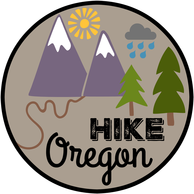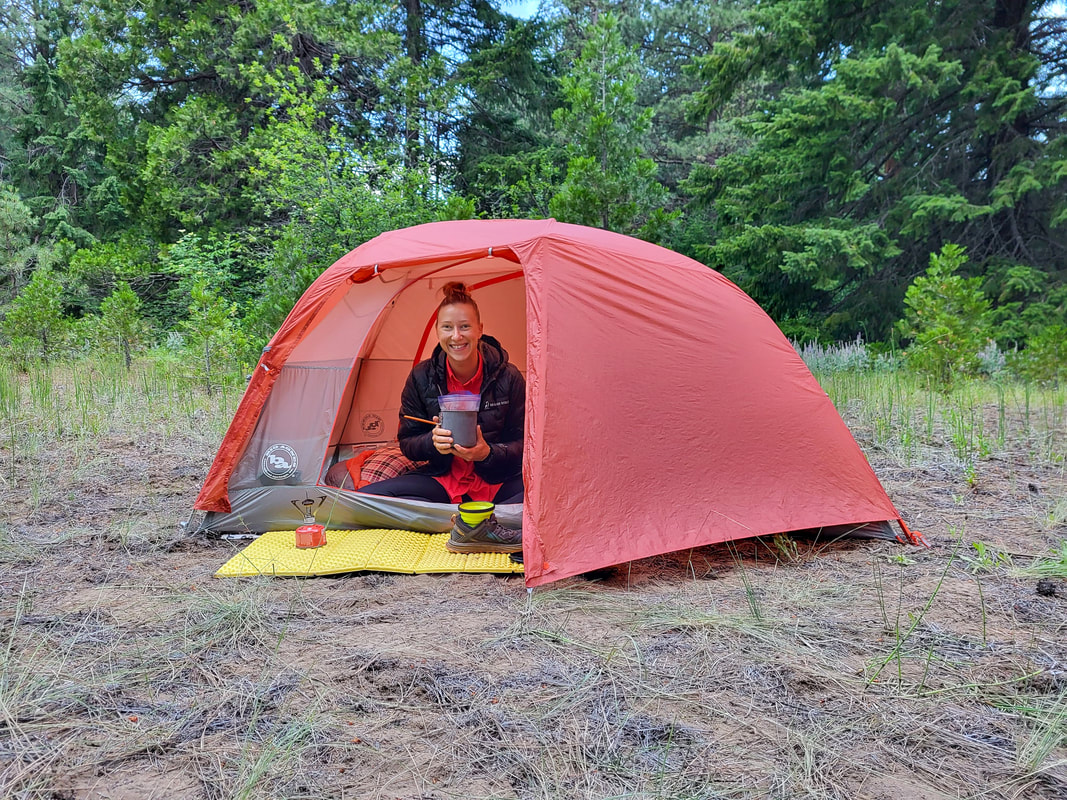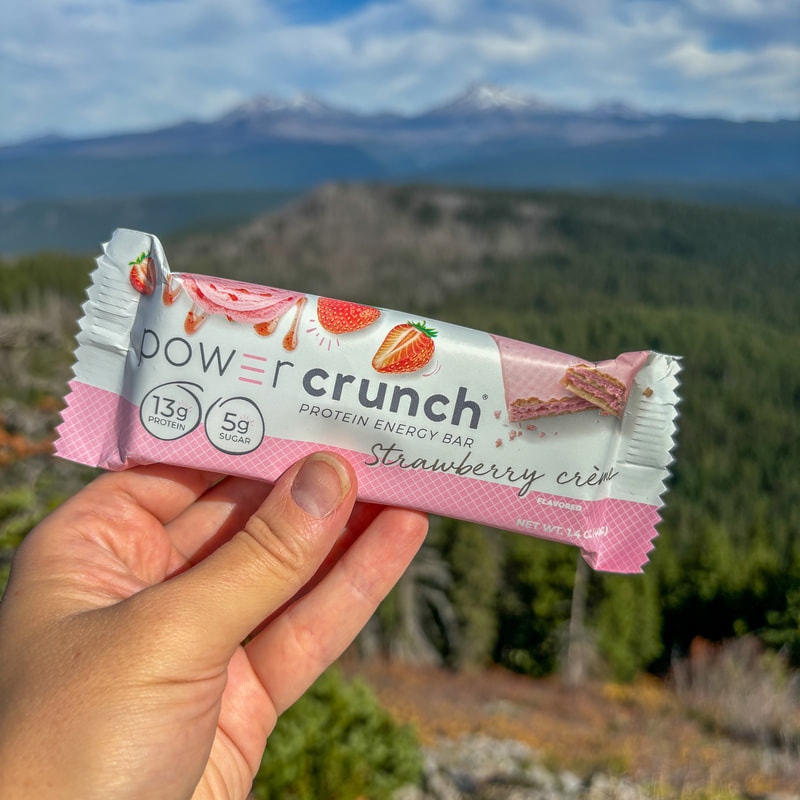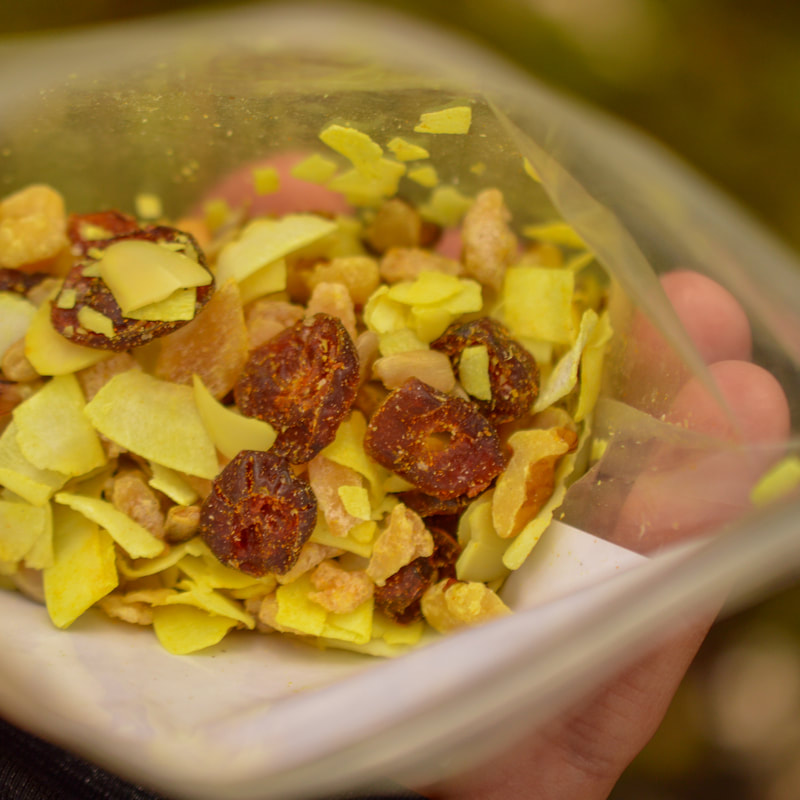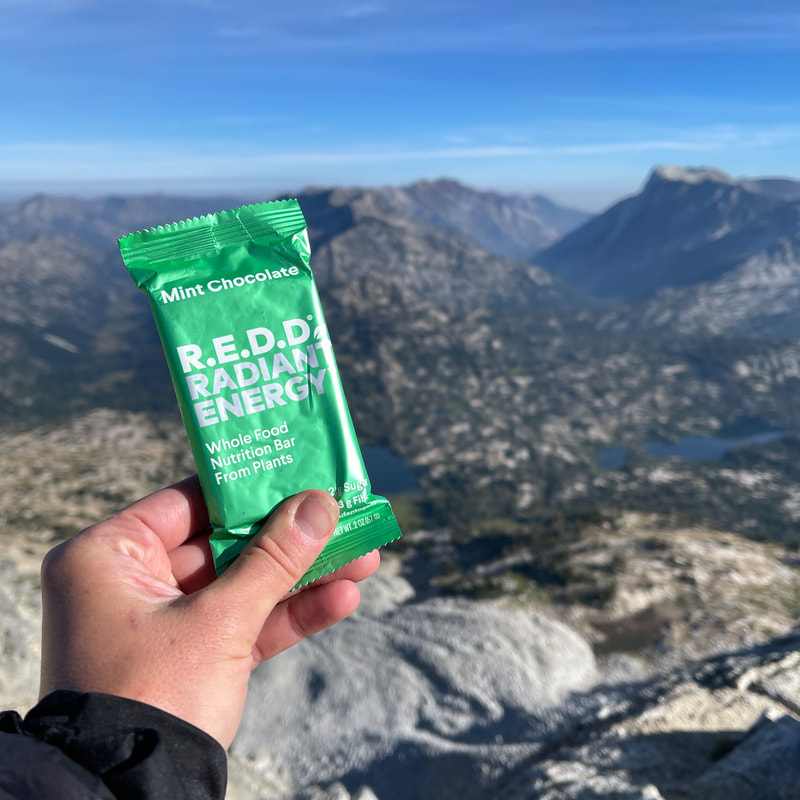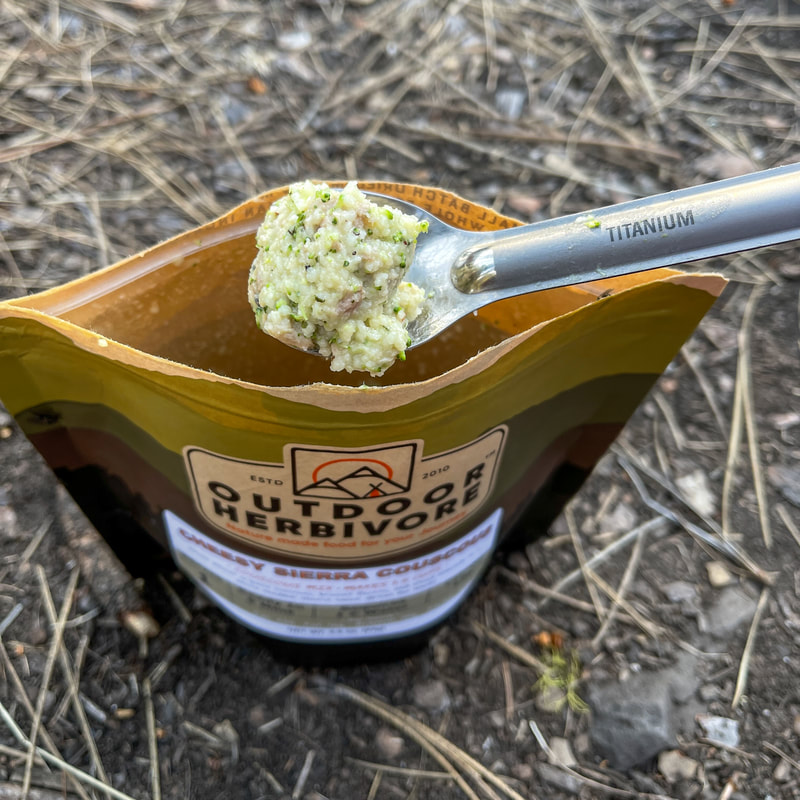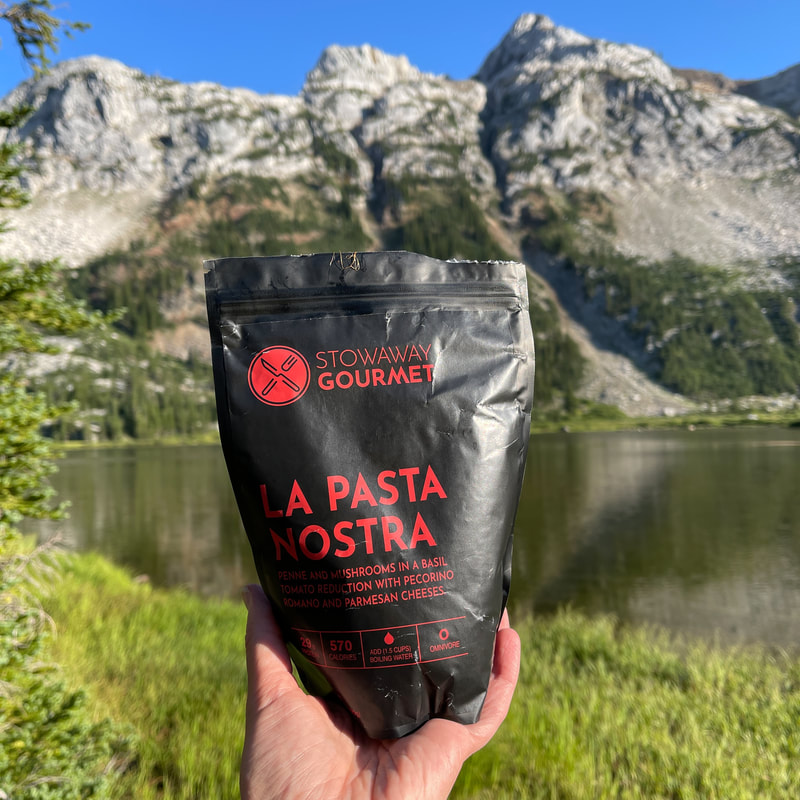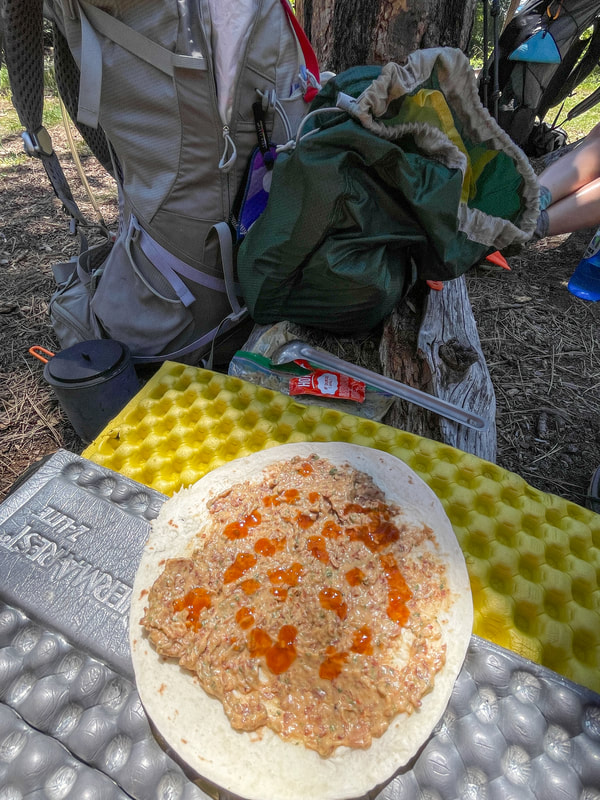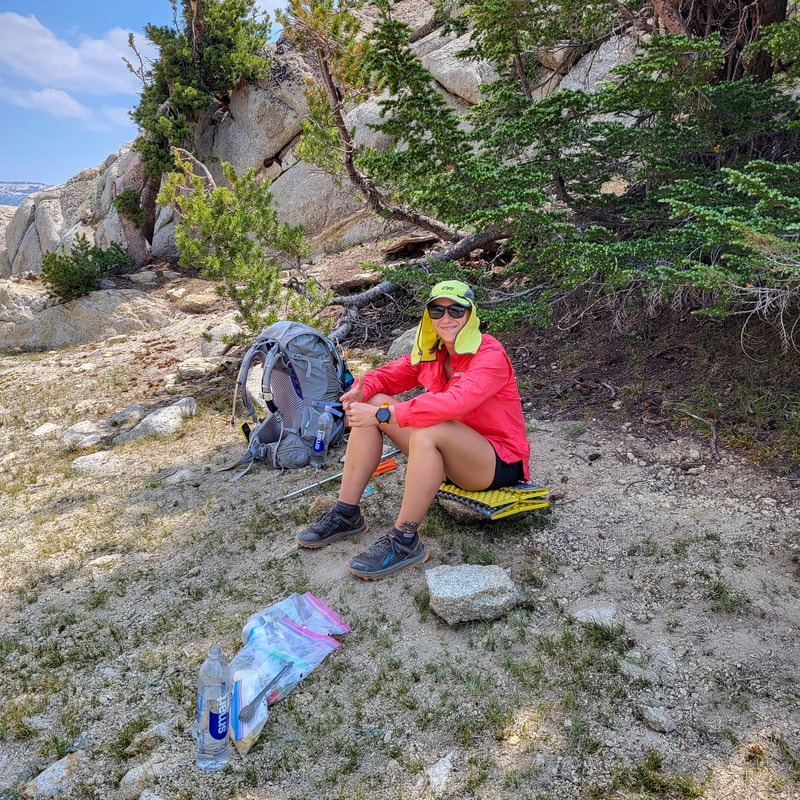Nutrition On The Trail
Food Tips For Backpacking Trips
|
Whether you’re backpacking for a few days, doing a section hike, or thru-hiking a long distance trail, nutrition is extremely important. After having hiked a section of the Appalachian Trail, a few large sections of the Pacific Crest Trail, and countless shorter backpacking trips and day hikes over the past 10 years, I can speak from personal experience that nutrition on the trail is just as important as daily foot care and having the right gear. Food is probably the number one thing hikers think about while on the trail, but it is not always the most thought out. Making sure you are eating enough calories and the right kind of food can play a huge part in making or breaking your adventure, especially if it is over many days or weeks (in the case of a thru-hike, even months). Oftentimes the mindset is, “I am burning so many calories out here, I can eat whatever I want!” It is true, you burn an immense amount of calories hiking 10-30 miles a day with a backpack on, but it is important to choose the right kind of nutrition so that you can fuel your body and have it work optimally for you during your trip.
|
Let’s talk about calories from sugar. Processed sugar is what a lot of people crave when they’re hiking, and for good reason. Eating some M&M’s, a Snickers bar, or some gummy bears, offers the body an immediate boost of energy. Unfortunately, this energy is not sustainable and after about 30 minutes, your body crashes from the quick blood sugar spike and you will feel even more depleted than before you ate the Snickers bar. Even healthier options such as dried fruit can have this same effect. If you are craving a sugary snack, make sure it is paired with some protein and healthy fats. This combination will help sustain your body much longer and you also won’t have that sugar crash. Some examples of sustainable energy snacks that I enjoy on the trail are: R.E.D.D. Bars (my favorite flavor is the mint chocolate), Power Crunch Protein Wafer bars (13g of protein and only 5g of sugar), Trail Butter (packets of different flavors of almond butter), and trail mix such as Ginger Berry Fusion from Outdoor Herbivore.
Now let’s talk about actual meals. There are countless meal options for backpacking, and they’re most likely all going to be very different than what you eat during your regular day-to-day life. This can send your stomach into a tizzy, so here are some tips that can help your body adjust to trail food and also help you feel not so sluggish and possibly depleted during your trip.
- Avoid eating too many meals that have lots of preservatives. The fast and easy meal options are frequently some of the worst for your body, and even though Ramen noodles and mac and cheese packets are high in calories, in the long run, these foods are not sustainable for your body because they are packed with preservatives, artificial flavorings, food coloring and they there are almost no vitamins and nutrients in them. If you are going to prepare Ramen on the trail, a great way to make it more nutritious is to throw some tuna and dehydrated vegetables into the meal, this will give it a boost of vitamins, healthy fats and protein, and it also adds calories.
- Many weekend backpackers love Mountain House or Backpackers Pantry meals, and while these meals do taste amazing, they are packed with more sodium than we could ever need, and tons of preservatives (the shelf life on these meals is generally 10 years!!!) While ingesting more sodium than normal is good on backpacking trips because it replenishes your electrolytes, it can be easy to overdo it due to these packaged meals having an average of 700mg - 1600mg of sodium per pouch!
- A great alternative to these types of freeze dried meals is to cook and dehydrate your own meals for backpacking, which I know, is a lot of work and does require the purchase of a dehydrator.
|
Another common issue regarding eating on the trail is getting enough calories. If you are long distance backpacking, it is hard not to lose weight, however there are some tricks you can do to make sure you are getting the maximum amount of calories you can during each meal. For breakfast you can add protein powder to your oatmeal, however, make sure to test your ratio before getting on trail because it can be a little chalky if you have too much powder. Depending on what type of protein powder you use, this can add 150-250 extra calories to your breakfast! I also really like adding powdered heavy whipping cream to my coffee. This not only makes your coffee super smooth and creamy, it adds a substantial amount of calories and fat to your morning meal. Another option is to add nuts and dried fruit to your oatmeal, although this can get a bit heavy if you’re long distance backpacking. For lunch there are countless high calorie meal options such as Probar Meal bars, for a quick on the go type of meal, tortillas with nut butter, cold soaked couscous with tuna and crackers or chips, guacamole or hummus packets with crackers or chips, and so much more. Some items that can add calories to your lunches are mayo packets and summer sausage and cheese. For dinner it is easy to add things to your meals that will add lots of calories like olive oil or coconut oil packets, and if you’re using tuna or chicken pouches, make sure to get the packets that say ‘tuna in oil’ rather than tuna in water. Also eating a tortilla with your meal, or adding peanut butter to your noodles, making them Pad Thai style, will definitely add a lot of calories.
<--This picture shows an example of my go-to lunch on backpacking trips. 1 packet of Outdoor Herbivore Pinhoti Pinto Queso (cold soak for 5-10 mins) is a total of 500 calories and is enough to put into two large size tortillas, however that is usually too much for me, so I take 1 tortilla, fill it, and then eat the rest of the beans with my spoon. I love adding some hot sauce packets to this. If you only eat one large tortilla this lunch totals 700 calories! |
Last but certainly not least is something many hikers do not think about, and that is electrolytes! Regardless of the season you’re hiking in, you are definitely sweating, which means you are depleting your body’s electrolytes. Electrolytes are important because they help regulate the balance of fluids in your body, they make sure your kidneys are functioning properly and they facilitate muscle contractions (this one is key for hiking!). If your body’s electrolytes are depleted, you can feel lightheaded, dizzy, have muscle cramps and it can lead to severe dehydration. Replenishing your electrolytes is very easy and is done by consuming Sodium, Calcium, Magnesium and Potassium. To make sure that you’re getting an adequate amount of each of those there are many drink mixes, tablets and even candy that make this process easy and delicious. Some options include: Nuun Hydration drink tablets, Emergen-C Hydration Plus Sports Drink, SCRATCH LABS sports drink mix, and I also love the energy gummies that they make. Honey Stinger also makes great gummy chews, and I also love the Jelly Belly Sport Beans.
It can be extremely difficult knowing how much food to take on a backpacking trip, and it took me years to figure it out and learn how much my body needs on a trip in order to not feel completely depleted afterwards. After 10 years of hiking and backpacking, I have finally figured it out and my PCT section hikes in the summer of 2023 was the first time I felt like I was eating enough on a backpacking trip. Keep in mind, everyone is different, and what works for me may not work for you, but for reference I try to eat 3,000 calories per day when I am hiking between 15-25 miles. Some days I am definitely burning more calories than that, but I find that I physically cannot ingest more than 3,000 calories per day and it is enough to not leave me feeling depleted at the end of a 3-6 day trip. Always feel free to email me if you need help with packing food for a backpacking trip.
